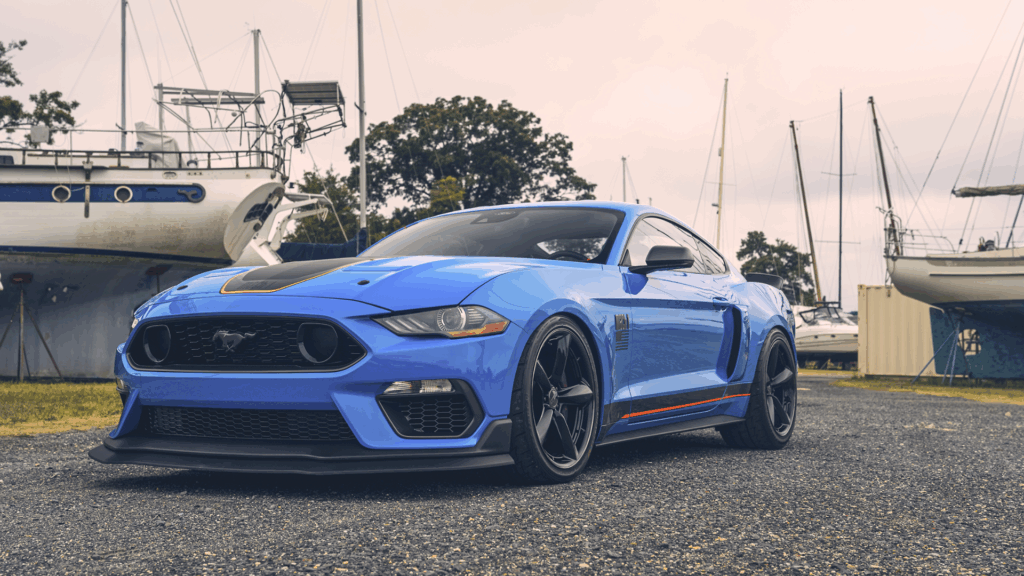As someone who’s loved Mustangs for years and worked with cars professionally, I’ve heard plenty of questions about wheels and bolt patterns.
The bolt pattern on your Mustang may seem like a small detail, but it’s crucial when choosing the right wheels.
If you’re upgrading your wheels, replacing a damaged one, or just want to better understand your car, knowing the correct bolt pattern helps you avoid costly mistakes.
In this guide, I’ll walk you through the different bolt patterns used on Mustangs across generations and show you how to find the right one for your model.
I’ll also compare Mustang bolt patterns to other popular car brands, so you can figure out which wheels might fit.
What Is the Bolt Pattern for a Mustang?
The bolt pattern, sometimes called the bolt circle or pitch circle diameter, is the measurement that tells you how the lug holes are arranged on a wheel.
It’s written using two numbers: the number of lug holes and the size of the circle they form, usually in millimeters or inches.
For example, if you see “5×114.3mm,” it means the wheel has five lug holes arranged in a circle with a diameter of 114.3 millimeters.
This measurement is crucial because it must match your Mustang’s precise dimensions for the wheels to fit properly.
Over the years, the Ford Mustang has employed different bolt patterns, and these changes typically occurred when the car’s platform or design underwent an update. Knowing the correct pattern helps you find the right wheels without any guesswork.
List of the Mustang Bolt Patterns
Understanding the correct bolt pattern for your specific Mustang model is crucial when shopping for new wheels. Here’s a comprehensive breakdown of bolt patterns across the Mustang’s generations:
1. 1964.5–1966 Mustang
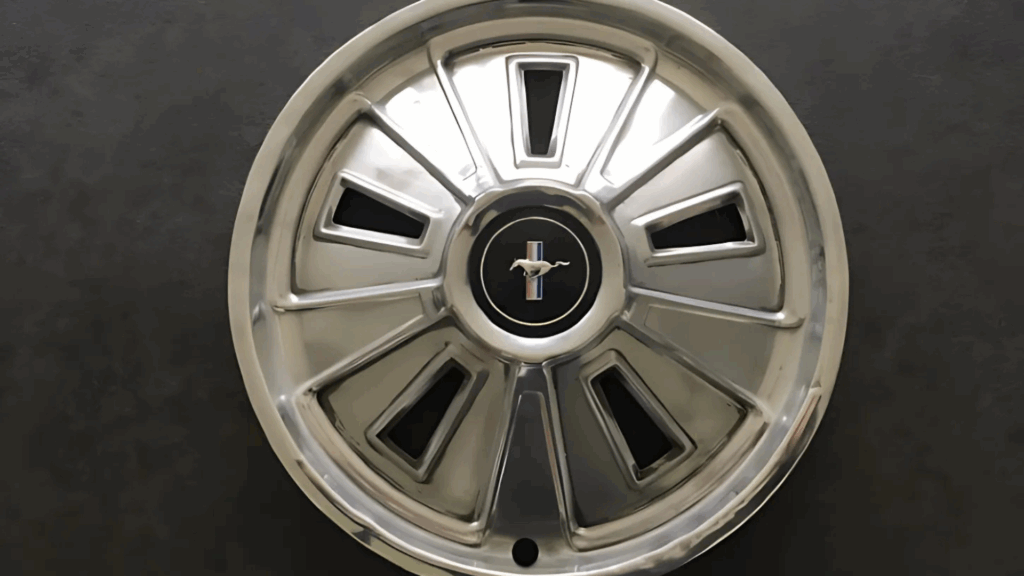
The original Mustangs from 1964.5 to 1966 all came with a 5×114.3mm (5×4.5″) bolt pattern, no matter which engine option you picked. This five-lug setup became a classic standard and made it easy to find matching wheels.
These early Mustangs were equipped with 14-inch wheels as standard, resulting in a simple and clean appearance. Since the bolt pattern stayed the same across these years, you could easily swap wheels between different trims and models.
This setup provided the first-generation Mustangs with a solid foundation for customizing and upgrading wheels, eliminating concerns about fitment issues.
2. 1967–1973 Mustang
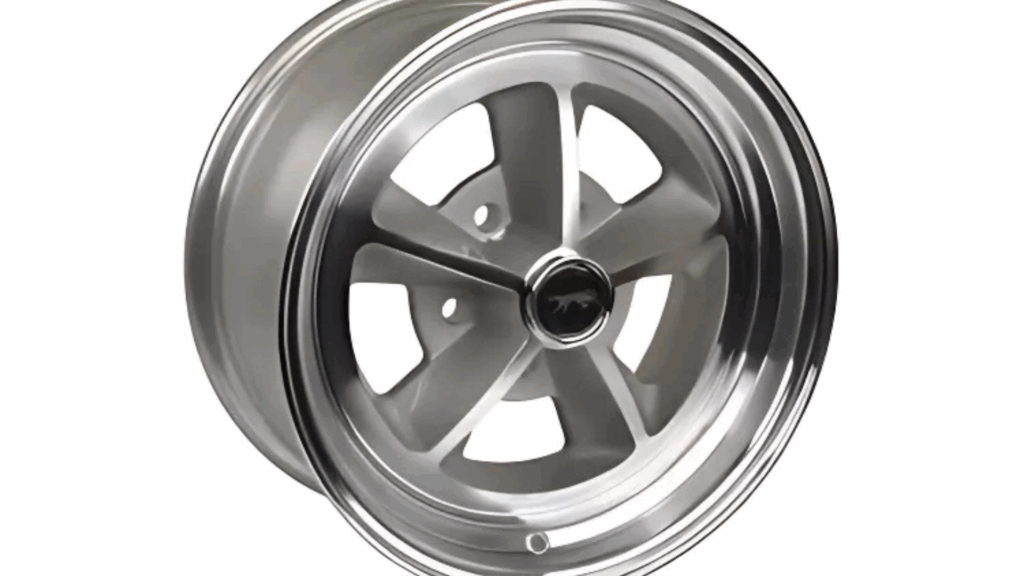
Even though the Mustang’s body style changed quite a bit between 1967 and 1973, Ford kept the same 5×114.3mm (5×4.5″) bolt pattern for all models, including the powerful Shelby versions.
Keeping the bolt pattern consistent meant owners could swap wheels from one model year to another without trouble. These years are known for bigger, more aggressive designs, and many came with wider wheels.
But no matter how different the cars looked, they all used the same wheel mounting pattern. That made it easier to find aftermarket wheels or use factory ones from other models.
3. 1979–1993 Mustang 4-Cylinder and Early V8s
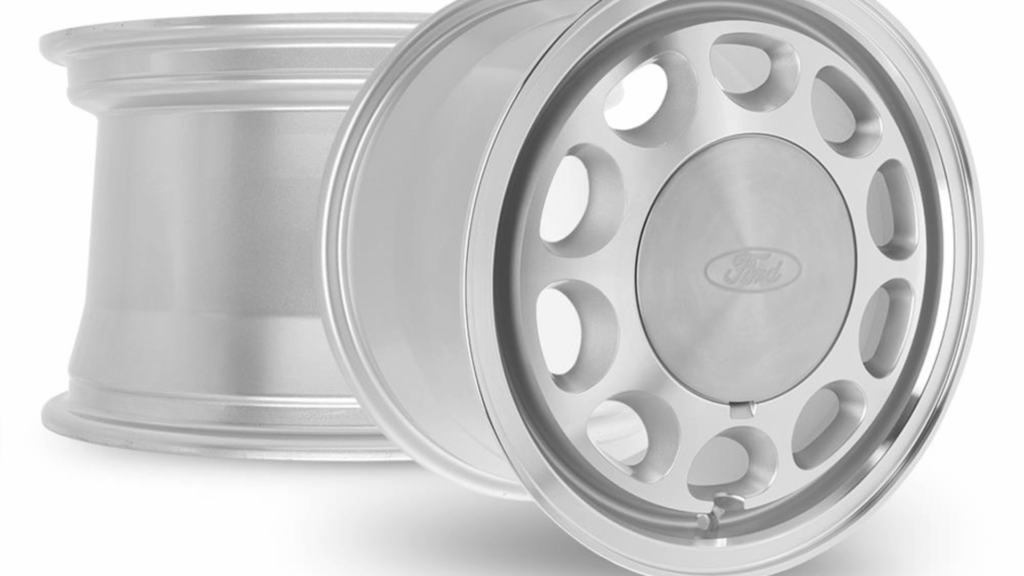
The Fox Body Mustangs, from 1979 to 1993, marked a significant change in design, and with that came a new bolt pattern for most trims. The majority of 4-cylinder and early V8 models used a 4x108mm (4×4.25″) bolt pattern.
This four-lug setup was a big shift from the five-lug used in earlier Mustangs. It helped reduce cost and weight, but also limited wheel choices.
Although it worked fine for most drivers, performance fans often upgraded to a five-lug setup to match higher-powered models and gain access to more aftermarket wheels.
4. 1993 Mustang Cobra
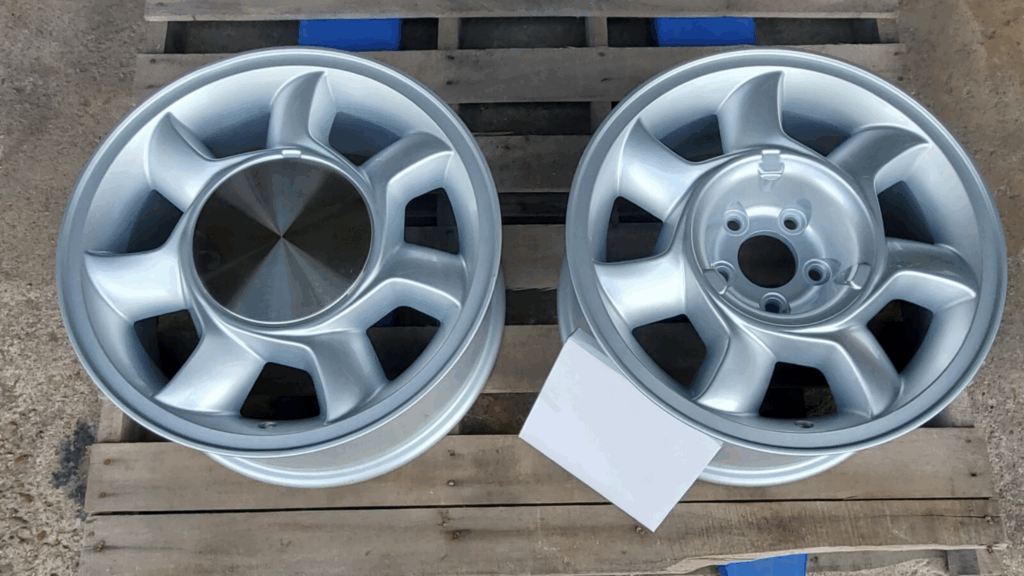
The 1993 Mustang Cobra stood out from other Fox Body Mustangs by bringing back the 5×114.3mm (5×4.5″) bolt pattern. While most other models still used a four-lug pattern, the Cobra got a five-lug setup for improved strength.
This change made the Cobra feel more like the Mustangs of earlier years and helped it stand out as a true performance model. The five-lug design also allowed owners to choose from a wider range of performance wheels.
That simple difference helped give the Cobra its own identity and made upgrading wheels much easier.
5. 1994–2004 Mustang GT and V6
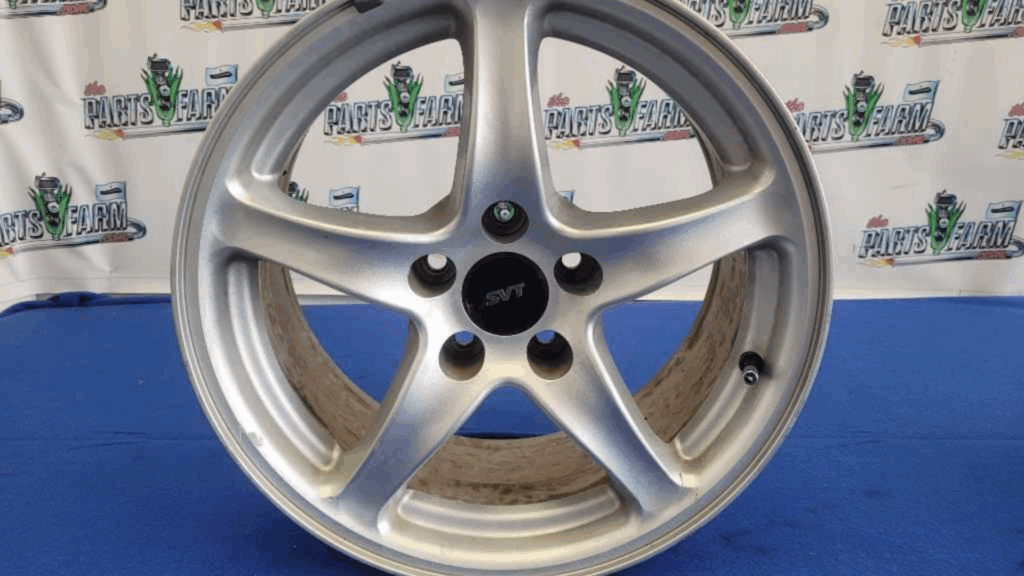
The SN-95 generation had a split in bolt patterns depending on the model. Most GT and V6 models from 1994 to 2004 used the 4x108mm (4×4.25″) four-lug bolt pattern.
This continued the same pattern from the Fox Body years for many trims, even though the rest of the car’s design had been completely updated.
While this setup worked fine for everyday use, many owners still preferred the five-lug pattern for a stronger look and more wheel options. Some even upgraded their cars to a five-lug setup for more choices.
6. 2003–2004 Mustang Cobra
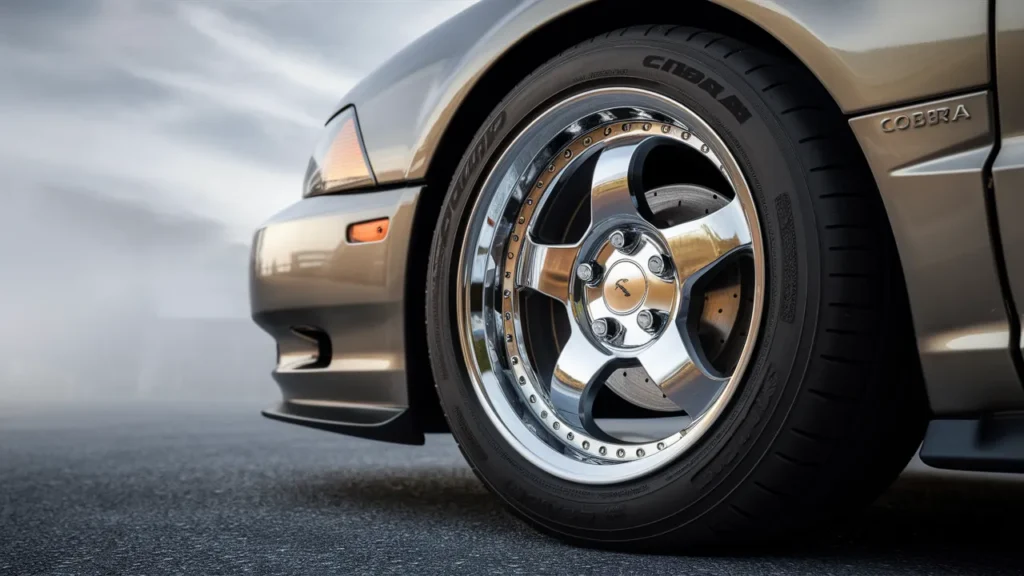
The 2003–2004 Cobra models brought back the 5×114.3mm (5×4.5″) bolt pattern, separating them from the standard GT and V6 trims that still used four lugs.
This five-lug setup gave the Cobra a stronger wheel connection and opened the door for a wider range of performance wheels.
Ford made this change to match the Cobra’s higher horsepower and serious handling upgrades. It also helped the Cobra stand out as a top-tier Mustang that deserved better parts and better performance.
7. 2005–2014 Mustang V6

With the launch of the S197 platform, Ford moved all Mustangs – including the V6 models – to the 5×114.3mm (5×4.5″) bolt pattern. This represented a significant departure from the four-lug setups used in earlier years.
The switch made it much easier for owners to find wheels, since this pattern is widely used in performance and aftermarket brands.
The five-lug design also added more strength, which enhanced both its appearance and performance. if you wanted factory wheels or custom ones, having a standard bolt pattern across the lineup made things much simpler.
8. 2005–2014 Mustang GT
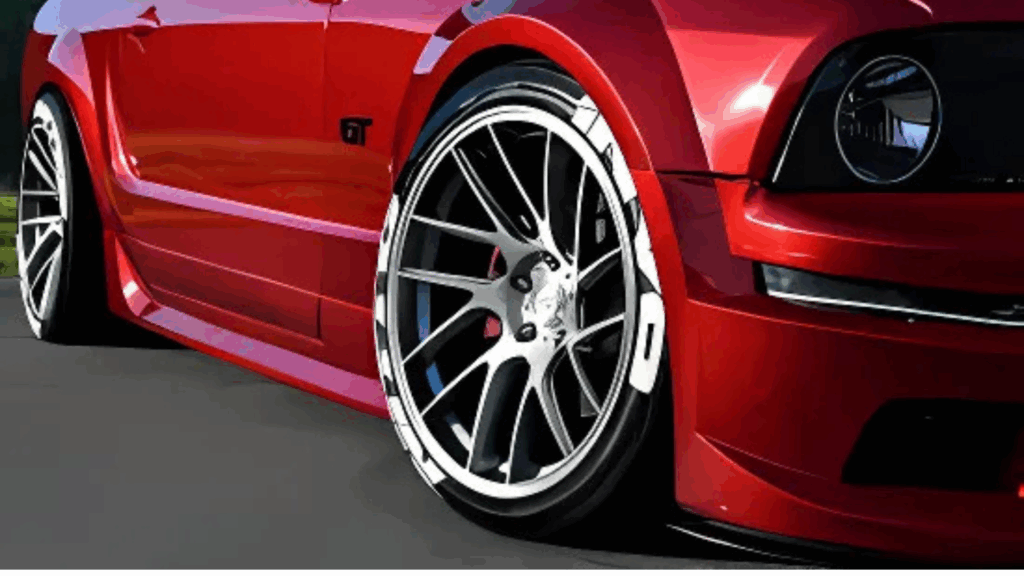
The GT models from 2005 to 2014 also used the 5×114.3mm (5×4.5″) bolt pattern, matching the V6 versions of the same generation. This made it easier for Mustang owners to swap wheels and gave everyone more options.
Because both trims used the same pattern, you could upgrade from V6 wheels to GT wheels without any extra work.
This consistency helped create a stronger aftermarket for Mustang wheels and simplified things for buyers. if you wanted to customize or just replace worn-out wheels, having one bolt pattern across trims made it easier than ever.
9. 2024 Mustang EcoBoost and GT
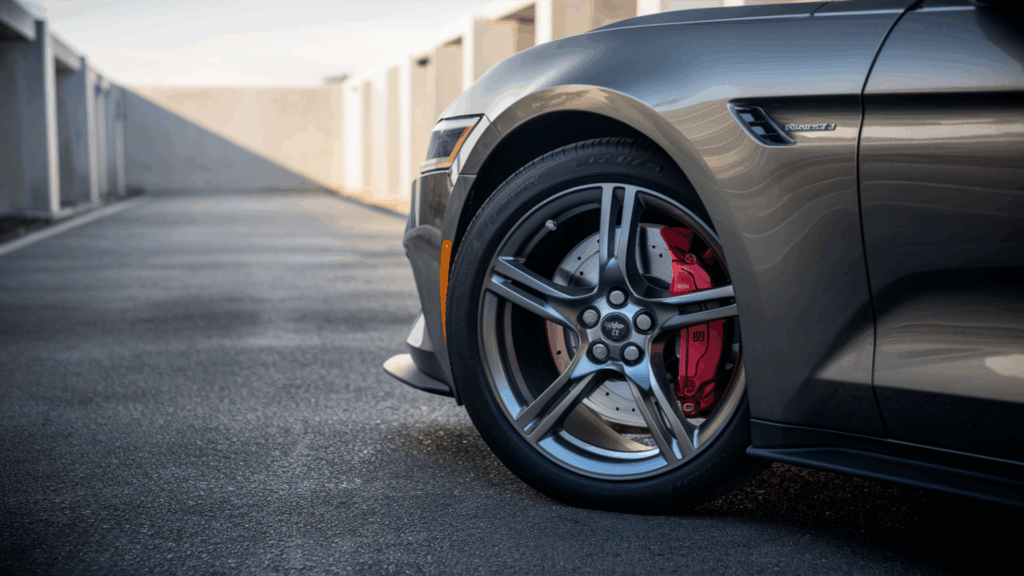
The newest S650 generation continues the trend by sticking with the 5×114.3mm (5×4.5″) bolt pattern on both EcoBoost and GT models. This gives drivers the same flexibility as past generations when it comes to finding or upgrading wheels.
If you already have wheels from a recent Mustang, chances are they’ll still fit. This consistency helps Mustang fans save money, reuse parts, and find wheels that fit without dealing with tricky measurements.
Even as designs and technology improve, Ford has made sure the basics still work across the board.
10. 2024 Mustang Dark Horse
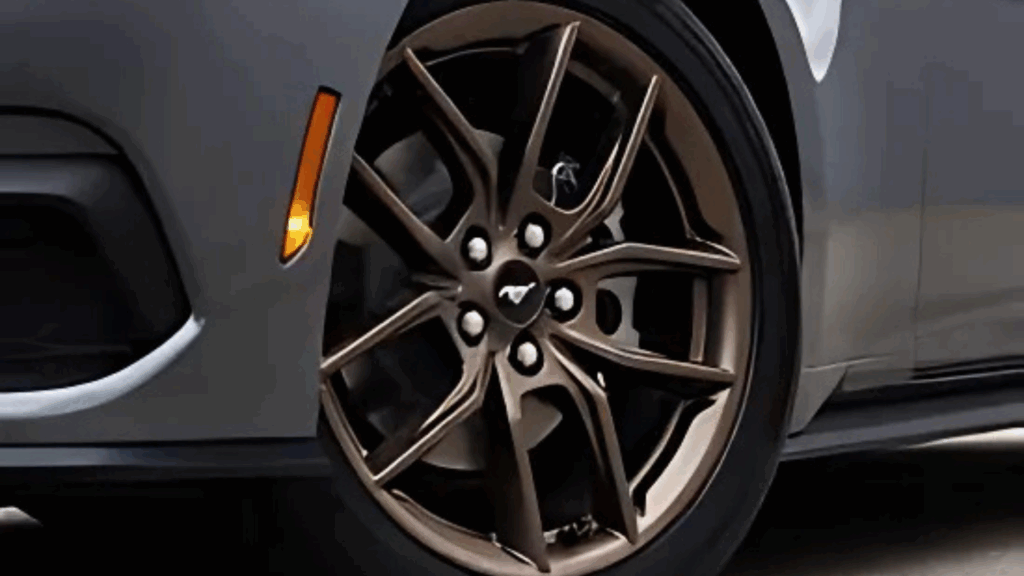
The Dark Horse model also uses the 5×114.3mm (5×4.5″) bolt pattern, just like the other S650 Mustangs. But because this is a performance model, it usually comes with wider wheels and higher-performance tires.
Even though the bolt pattern stays the same, the wheel specs – like width and offset – may differ. That’s something to check if you’re planning upgrades.
Still, keeping the bolt pattern consistent makes it easy to find wheels that fit. This gives Dark Horse owners more options without limiting performance or style. It’s a smart move that keeps upgrading simple.
Mustang Bolt Patterns at a Glance
| Mustang Model/Generation | Bolt Pattern | Details |
|---|---|---|
| 1964.5–1966 Mustang | 5×114.3mm (5×4.5″) | Classic standard, easy to swap wheels across different trims. |
| 1967–1973 Mustang | 5×114.3mm (5×4.5″) | Consistent bolt pattern despite body style changes, perfect for wheel swaps. |
| 1979–1993 Mustang (4-Cylinder and Early V8s) | 4x108mm (4×4.25″) | Four-lug setup, lower cost and weight but fewer wheel choices. |
| 1993 Mustang Cobra | 5×114.3mm (5×4.5″) | Return to five-lug pattern for improved strength and performance. |
| 1994–2004 Mustang GT and V6 | 4x108mm (4×4.25″) | Maintained four-lug pattern for many trims, despite full redesign. |
| 2003–2004 Mustang Cobra | 5×114.3mm (5×4.5″) | Return to five-lug setup for better performance and wheel options. |
| 2005–2014 Mustang V6 | 5×114.3mm (5×4.5″) | Unified five-lug pattern across all models, simplifying wheel choices. |
| 2005–2014 Mustang GT | 5×114.3mm (5×4.5″) | Same five-lug pattern as V6 models for easier wheel swaps. |
| 2024 Mustang EcoBoost and GT | 5×114.3mm (5×4.5″) | Consistent pattern for easy upgrades and cost savings. |
| 2024 Mustang Dark Horse | 5×114.3mm (5×4.5″) | Same pattern as other S650 Mustangs, but with wider wheels and performance tires. |
Comparisons Between Mustang and Other Brands’ Bolt Patterns
Understanding how Mustang bolt patterns compare to those of other vehicles can be very helpful when considering new wheel options or seeking cross-compatibility.
| Vehicle | Bolt Pattern | Notes |
|---|---|---|
| Ford Focus ST, Explorer, F-150 (some years) | 5×114.3mm | Direct bolt pattern match with Mustang |
| Chevrolet Camaro (2010+) | 5x120mm | Different pattern; adapters needed |
| Dodge Challenger/Charger | 5x115mm | Very close but not direct; adapters recommended |
| Nissan 350Z/370Z, Subaru WRX, Infiniti models | 5×114.3mm | Same pattern; other specs must match |
| BMW (most models) | 5x120mm | Different; not directly compatible |
| Mercedes-Benz (most models) | 5x112mm | Different; not directly compatible |
Even if the bolt pattern matches perfectly, it’s essential to double-check other key details, such as center bore size, wheel offset, and overall wheel dimensions.
These additional factors ensure your wheels fit correctly and perform safely without causing issues later on.
Conclusion
The Mustang’s bolt pattern has changed throughout its long history – from the reliable 5×114.3mm pattern on the early models, to the four-lug setups during the Fox Body years, and now back to the modern, standardized five-lug design.
Knowing your Mustang’s specific bolt pattern is one of the most important steps when you’re upgrading or replacing wheels.
While adapters are sometimes used to accommodate different bolt patterns, choosing wheels that are a direct fit will always provide the best safety, performance, and peace of mind.
If you’re restoring a classic 1965 Mustang or making changes to a brand-new 2024 Dark Horse, I hope this guide helped make sense of what can often be a confusing topic.
Just remember that the bolt pattern is only one part of the fitment puzzle – things like offset, wheel size, and center bore also play a big role in getting the perfect setup for your ride.
Enjoy the road ahead, and may your Mustang always stand out with wheels that fit just right and turn heads wherever you go.


